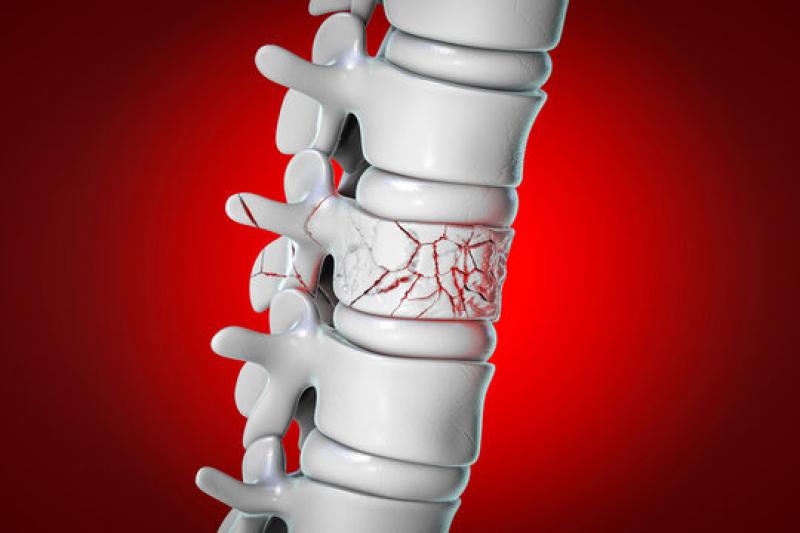Vertebral compression fractures (VCFs) represent a significant medical concern, especially among aging populations and those suffering from osteoporosis or traumatic spinal injuries. These fractures occur when the vertebrae, the bones forming the spinal column, collapse or compress, causing pain, reduced mobility, and diminished quality of life. The advent of innovative vertebral compression fracture devices has revolutionized treatment options, offering minimally invasive solutions to restore vertebral height, alleviate pain, and improve patient outcomes.
Overview of Vertebral Compression Fracture Devices and Their Role in Treatment
Vertebral Compression Fracture Devices are specialized medical implants and instruments designed to stabilize and repair fractured vertebrae. These devices are predominantly used in conjunction with surgical procedures such as vertebroplasty and kyphoplasty, which involve the percutaneous injection of bone cement to reinforce the damaged vertebrae. Key categories of vertebral compression fracture devices include balloon kyphoplasty tools, vertebral augmentation kits, bone cement delivery systems, and expandable implants that restore vertebral height.
The primary goal of these devices is to provide structural support to weakened or collapsed vertebrae, reduce pain caused by micro-movements at the fracture site, and minimize spinal deformity progression. Compared to traditional open spinal surgeries, treatments involving VCF devices are less invasive, require shorter hospital stays, and promote faster patient recovery. Over recent years, advancements in biomaterials, device design, and delivery techniques have further enhanced the safety, efficacy, and versatility of these treatment modalities.
Emerging Technologies Improving Vertebral Compression Fracture Device Performance
Technological innovation is driving significant improvements in VCF devices, focusing on optimizing patient outcomes and expanding treatment possibilities. One major development involves the use of bioactive and radiopaque bone cements that not only provide mechanical support but also promote bone regeneration and allow clearer imaging during and after procedures. Additionally, minimally invasive delivery systems have evolved, now enabling more precise placement and controlled cement injection, reducing the risk of leakage and subsequent complications.
Expandable implants that can be inserted in a collapsed state and then expanded inside the vertebral body represent another breakthrough. These implants help to restore vertebral height more effectively than traditional balloon kyphoplasty tools and maintain the vertebral body’s shape, reducing spinal deformity and improving biomechanical stability. Moreover, innovations in imaging guidance—including real-time 3D navigation and robotic assistance—are enhancing the accuracy of device placement.
Research efforts are also focused on developing resorbable and biodegradable implants that provide temporary support while encouraging natural bone healing, thereby potentially eliminating the need for permanent foreign materials in the spine.
Market Trends and Commercial Developments Driving Vertebral Compression Fracture Device Demand
The vertebral compression fracture devices market has experienced pronounced growth due to increasing prevalence of osteoporosis and spinal trauma, along with rising awareness about minimally invasive treatment options. An expanding aging demographic worldwide significantly contributes to the growing incidence of VCFs, fueling demand for effective therapeutic devices. Furthermore, the increasing adoption of outpatient and ambulatory surgery settings is promoting the use of these devices, as they enable shorter recovery times and reduced healthcare costs.
From a commercial perspective, key trends include strategic collaborations between medical device manufacturers and healthcare providers aimed at enhancing device accessibility and training. Additionally, regional healthcare infrastructure improvements, especially in emerging markets, are creating new avenues for device penetration. A notable trend is the diversification of product portfolios to cater to specific patient needs, including customized implants based on vertebral anatomy and fracture patterns.
Regulatory approvals for next-generation devices and ongoing clinical studies supporting their efficacy and safety further bolster market confidence. Moreover, the rising integration of smart technologies like sensor-enabled implants and data-driven monitoring systems also indicates a future trajectory toward personalized spinal fracture management solutions.
Where to Access Comprehensive Vertebral Compression Fracture Device Market Insights
For stakeholders, investors, healthcare practitioners, and medical device companies seeking detailed analysis on vertebral compression fracture devices, comprehensive market research reports are invaluable. These reports offer thorough evaluations of market dynamics, segmentation by product type and geography, competitive landscapes, and growth forecasts.
In-depth insights typically cover technological developments, regulatory environments, reimbursement scenarios, and emerging market opportunities. Accessing well-curated data and expert analyses assists in understanding the commercial potential, aids strategic decision-making, and informs product development roadmaps. Market intelligence resources also provide valuable information on leading companies, recent mergers and acquisitions, as well as end-user preferences and adoption patterns worldwide.
By reviewing detailed market research studies available from authoritative industry sources, interested parties can navigate the complex vertebral compression fracture devices market landscape efficiently to capitalize on upcoming trends and innovations.
Conclusion
The field of vertebral compression fracture devices is rapidly advancing, driven by technical innovations, demographic trends, and evolving clinical practices. These devices play a crucial role in improving patient quality of life by offering effective, minimally invasive treatment options for vertebral fractures. As the healthcare ecosystem continues to focus on enhanced spinal care solutions, the significance of such devices will only grow, supported by robust market developments and evolving technologies.
Get this Report in Japanese Language: 脊椎圧迫骨折治療デバイス
Get this Report in Korean Language: 척추 압박 골절 장치
About Author:
Money Singh is a seasoned content writer with over four years of experience in the market research sector. Her expertise spans various industries, including food and beverages, biotechnology, chemical and materials, defense and aerospace, consumer goods, etc. (https://www.linkedin.com/in/money-singh-590844163)
